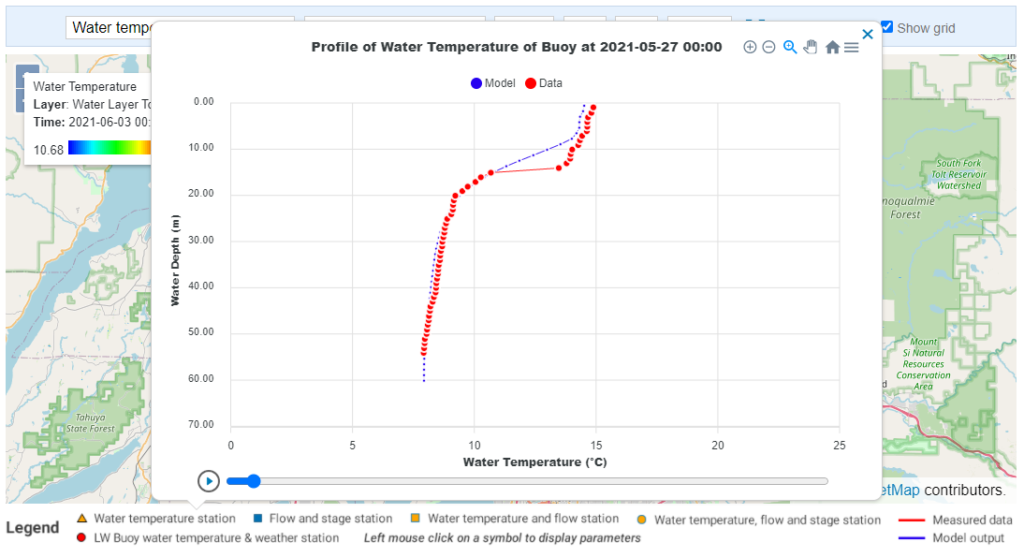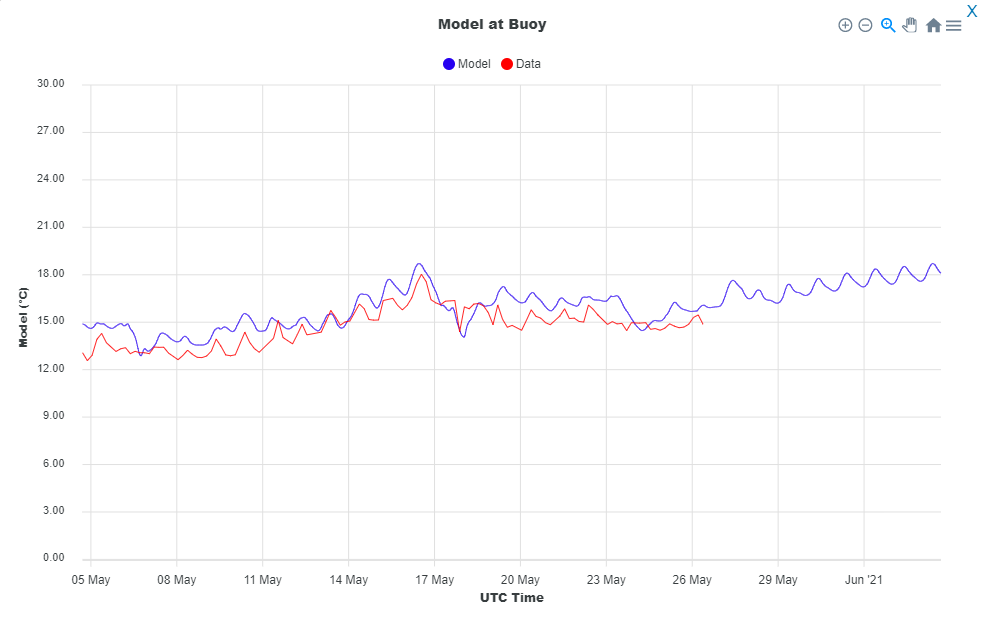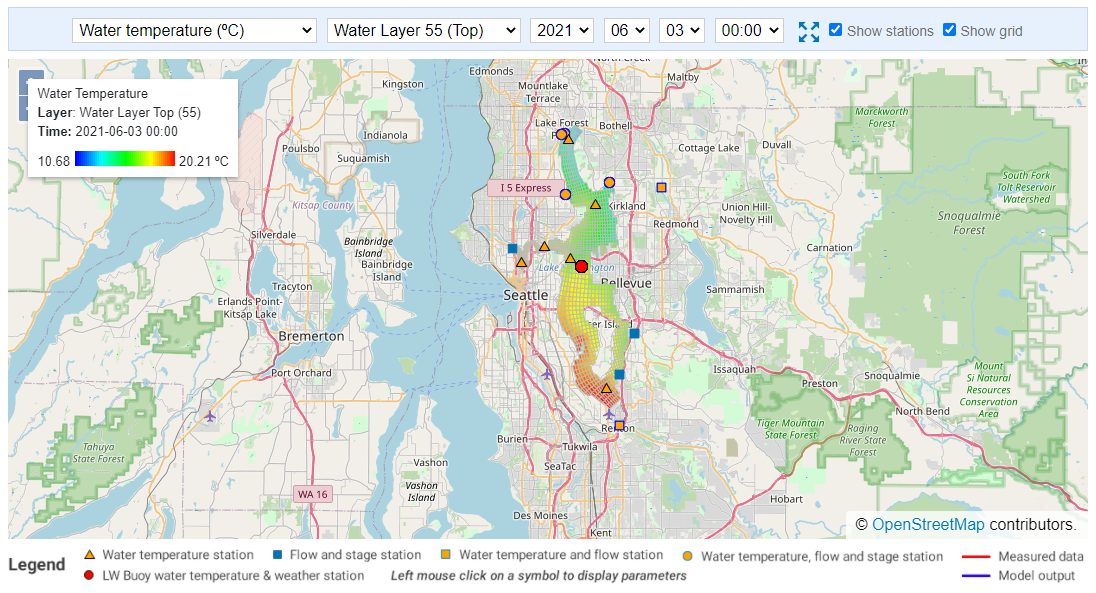DSI recently developed a real-time model for Lake Washington, along with a public-access model portal. The portal allows users to view historical and current data on measured and simulated water levels, temperature, and velocity, presented in map view, time series, and vertical profiles. Users can also compare the data with the model and generate statistical measures of accuracy.
We have created a video that demonstrates the features and capabilities of the Lake Washington real-time model and portal (Figure 1), and we also provide further detail in the discussion below.
Hydrodynamic Model
Using the EFDC+ Sigma-Zed approach, DSI developed a hydrodynamic model of Lake Washington with 1,183 cells and 55 layers, to assess the ability of the model to predict the epilimnion and hypolimnion. This provided a high correlation between the model output and the observed data, which, in turn, inspired the development of the current real-time system. An example of this correlation is shown in Figure 2.

Real-time Model
DSI uses online data sources from King County, USGS, USACE, and SEATAC for the model boundary conditions, compiling them into an SQL database each day. This data is then processed to generate the necessary input files for the EFDC+ simulation. The model is then run once daily. All data retrieval processes, data processing, and model simulation are automated by a real-time service developed in C#. A flow chart showing the inputs to the model and the output files generated is shown in Figure 3 below.

Real-time Model Portal
The EFDC+ model outputs are written in NetCDF-CF UGRID format and then read directly by the web services developed in MVC ASP.NET. Using OpenLayers, the portal displays a map view of the model domain for water temperature and for water velocity magnitude and direction at each of the 55 layers (Figure 5). Clicking on a station provides information about the measured data at that location. In addition, the buoy in the middle of Lake Washington provides extensive data about the vertical temperature profile for comparison to model output as shown in Figure 2 (above). Finally, using the Measured Data vs. Simulation tab, the user can compare the model results to measured data (Figure 4).


Further Development
DSI has used real-time models to forecast the thermal properties of rivers and reservoirs for permitting applications in thermal power stations. The next step for the Lake Washington real-time model could be to use meteorological forecast data to predict future water temperature behavior. It is also possible to add water quality parameters to the model to predict algal blooms and other habitat-related issues.
View the Lake Washington real-time model portal for yourself here.
Characteristics of Lake Washington
Lake Washington, situated adjacent to the city of Seattle, is the second largest natural lake in the State of Washington, and is one of the best examples in the world of a successful lake restoration by the diversion of sewage. It has been extensively studied and researched.
The basin of Lake Washington is a deep, narrow, glacial trough with steeply sloping sides, originally sculpted by the Vashon ice sheet, the most recent continental glacier to move through the Seattle area. The lake is connected to Puget Sound via Lake Union and the Lake Washington Ship Canal, constructed in 1916. Lake Washington is 20.6 feet above mean lower low tide in Puget Sound.
Lake Sammamish and Lake Washington discharge to Puget Sound via the Ship Canal and eventually the locks and dam at the canal’s western end. Prior to construction of the canal, Lake Washington’s only significant inflow was from the Sammamish River in the north. Construction of the canal resulted in the lowering of the lake 9 feet to its present level, leaving the Black River dry. At that time, the Cedar River was diverted into Lake Washington to become the major contributor to the lake that it is today.
Mercer Island lies in the southern half of Lake Washington, separated from the lake’s eastern shore by a relatively shallow and narrow channel, and from the western shore by a much wider and deeper channel.
The lake’s two major influent streams are the Cedar River at the southern end and the Sammamish River at the northern end. The Cedar River contributes about 57 percent of the annual hydraulic load and 25 percent of the phosphorus load, while water from Lake Sammamish via the Sammamish River contributes 27 percent of the hydraulic load and 41 percent of the phosphorus load.
Between 1941 and 1963, Lake Washington received increasing amounts of secondary treated sewage, which resulted in eutrophication and a decline in water quality. Cyanobacteria dominated the planktonic algae in the lake from 1955 to 1973. Between 1963 and 1967, sewage was diverted from the lake; by 1968, discharges of untreated effluent (except for combined sewer overflows [CSO’s]) were reduced to zero. Rapid and predicted water quality improvements followed; cyanobacteria levels decreased and have been relatively insignificant since 1976.


